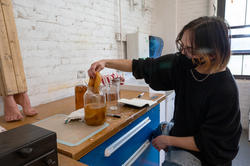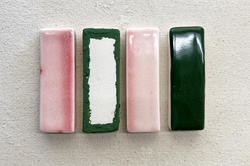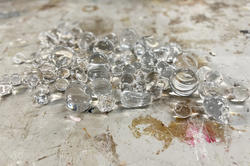Sculpture majors in a junior research studio draw inspiration from visiting experts working in a wide range of disciplines.
Please Touch
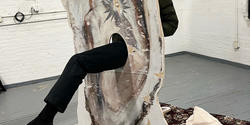
Sophomores in a fall Sculpture studio taught by faculty member Matt King are setting aside the no-touch norms of most galleries and museums and making work that invites viewers to physically engage with it.
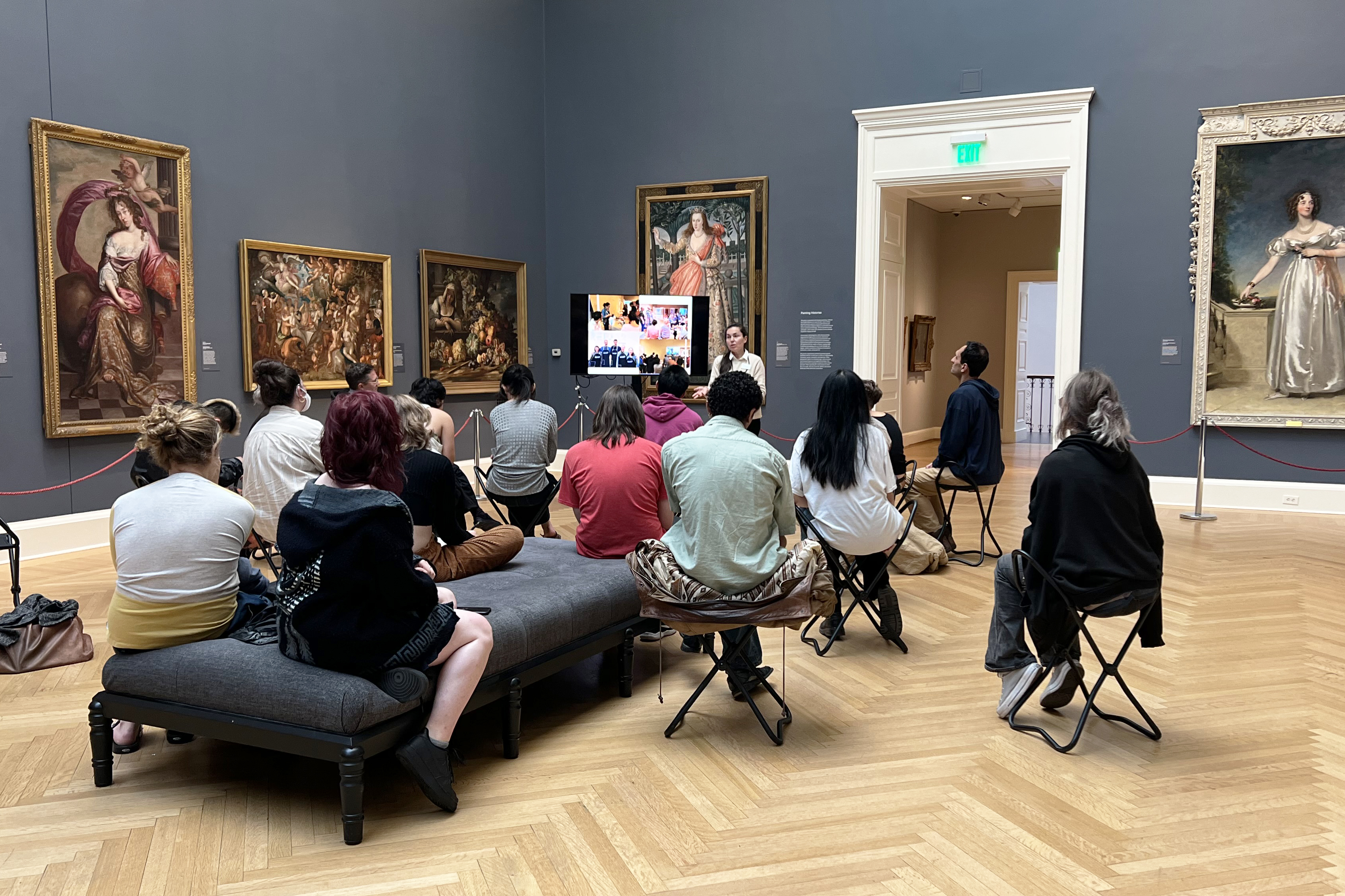
“We began by visiting the RISD Museum and discussing the taboo around touching objects in art settings and the various ways that artists have skirted it,” King says. Director of Public Programming Deborah Clemons welcomed the class into the museum’s Grand Gallery and reflected on some of the interactive pieces she’s helped to curate over the years. “A couple of years ago, Pablo Helguera created an installation for the Raid the Icebox Now series that looked like a residence and allowed visitors to sit on the furniture and read the books,” she recalled.
“Think about how to work around limitations and get to the essence of your piece.”
Other interactive installations invited visitors to meditate (Nathan Wong 19 PR, Intermediary, 2019), make their own prints on site (multiple artists, Locally Made, 2013), and record their voices, which were then incorporated into an evolving piece (Sebastian Ruth, Witnessing, 2019–20). “Think about how to work around limitations and get to the essence of your piece,” Clemons advised students. “How can you avoid confusing visitors by using signals to indicate that it is OK to touch?”
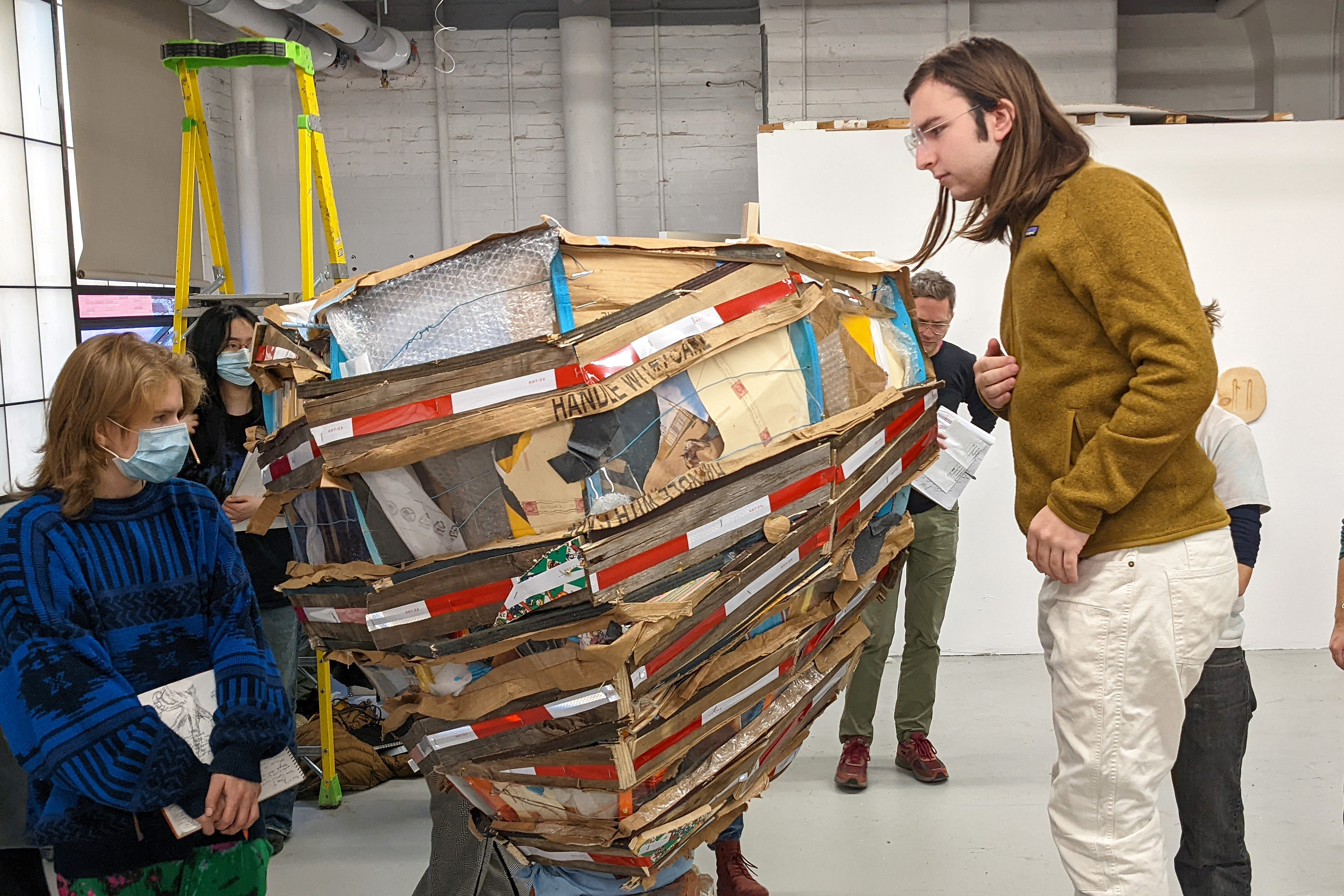
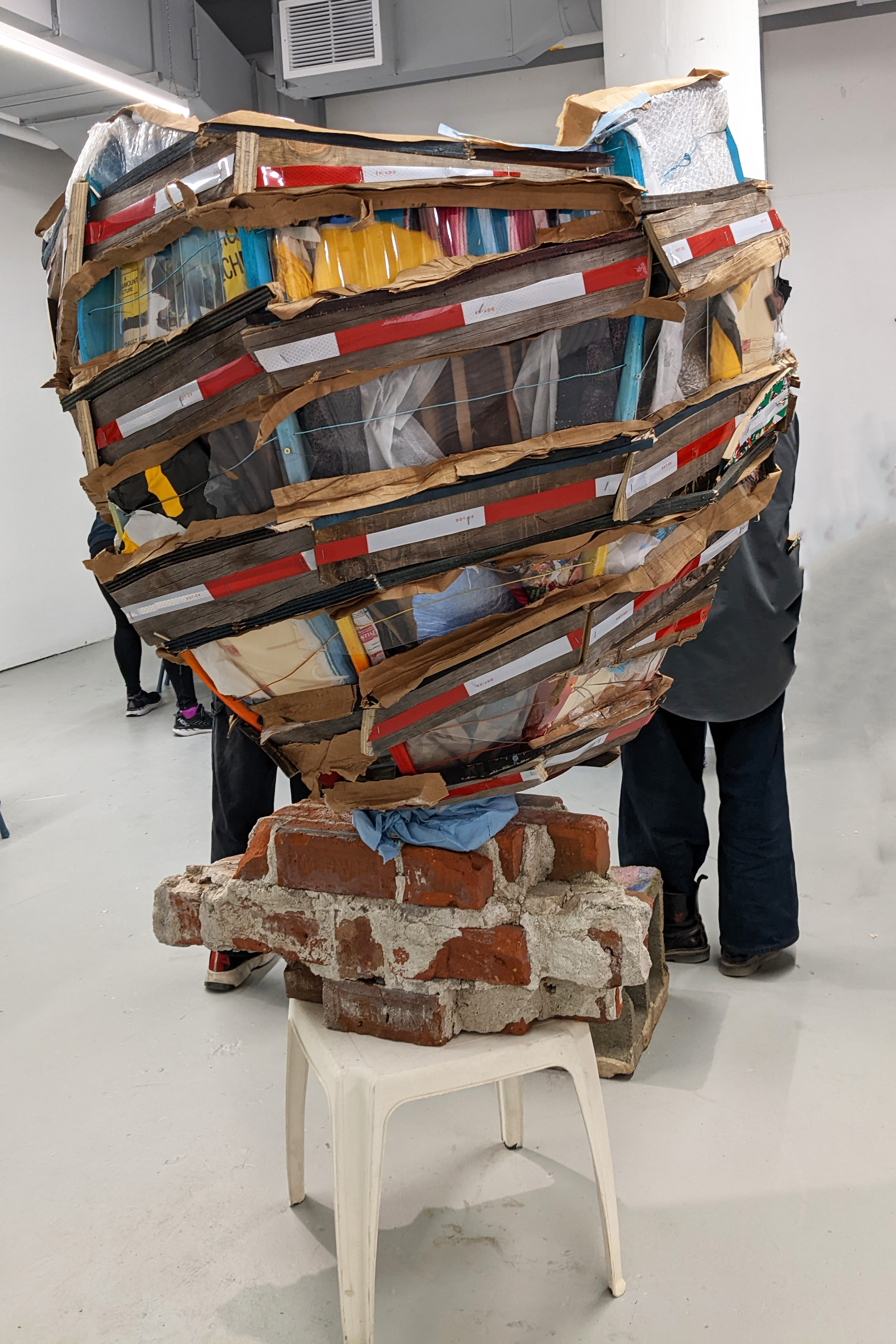
At a mid-November crit in RISD’s Metcalf Building, students present sculptures intended to be complete only when a human body interacts with them. The work is dynamic and varied, and the students are generous and honest in the feedback they give one another. “Be responsible about how you engage with each piece,” King reminds the class as things get underway, “and don’t overstep the permission that has been granted.”
Michael Kays 25 SC invites viewers to step up onto a makeshift stool to look inside his untitled mixed-media sculpture. “From the outside it seems very dangerous, but the inside is really serene,” one student observes. “I really appreciate that contrast.” Another student sees the piece as “order within chaos or, maybe, an escape from imposed order.”
“From the outside it seems very dangerous, but the inside is really serene.”
Kays describes listening to the class’s unexpected responses as “a fascinating experience” and explains that the piece is about addiction, overdose and recovery, and “accepting life on its own terms.”
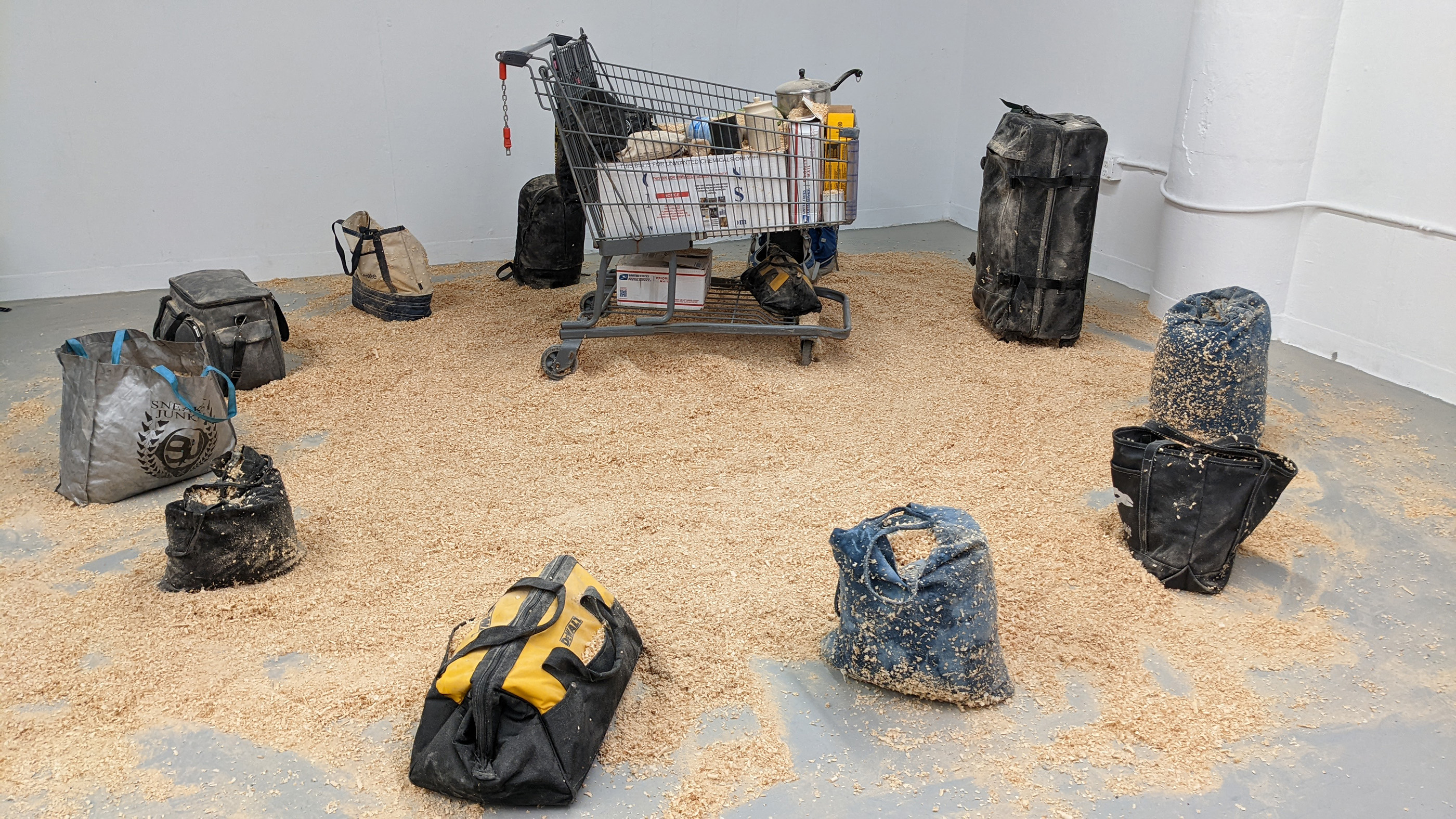
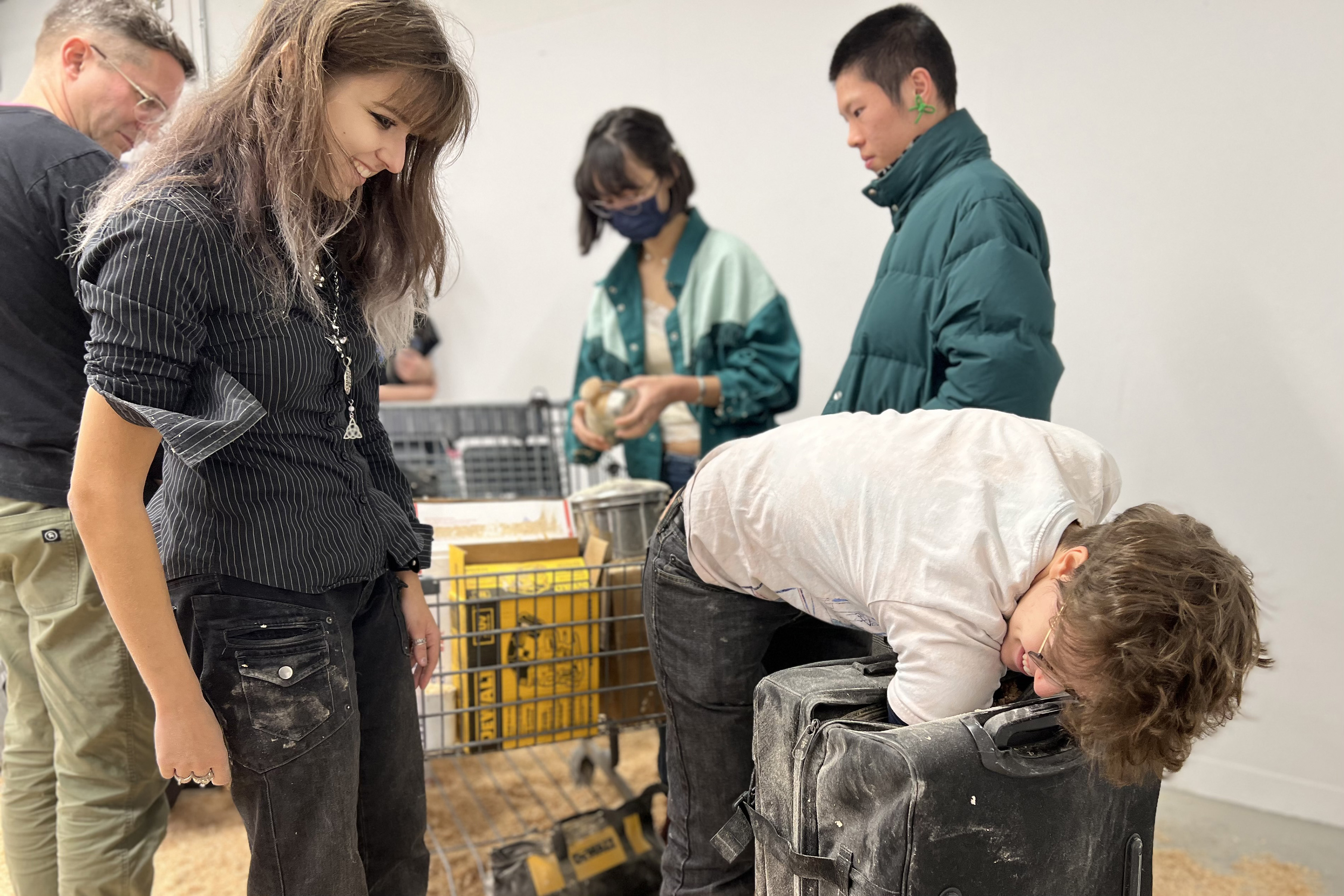
Up next is Buzzy Martin 25 SC, who decides not to offer verbal instructions about how to interact with the installation he created. Instead he points to a label on the wall granting viewers permission to search through the sawdust-stuffed luggage and other receptacles he’s arranged in a circle as long as they are returned to their original positions. An audio loop featuring a hard-to-decipher voiceover and warped carnival music adds to the overall experience.
“I’m interested in what the payoff is for getting dirty and interacting with this piece,” King offers. In response, one student says, “I think the point is that there is no payoff; there’s nothing to find in these bags.” King also notes that the inclusion of an old shopping cart brings to mind the post-apocalyptic landscape of Cormac McCarthy’s The Road.
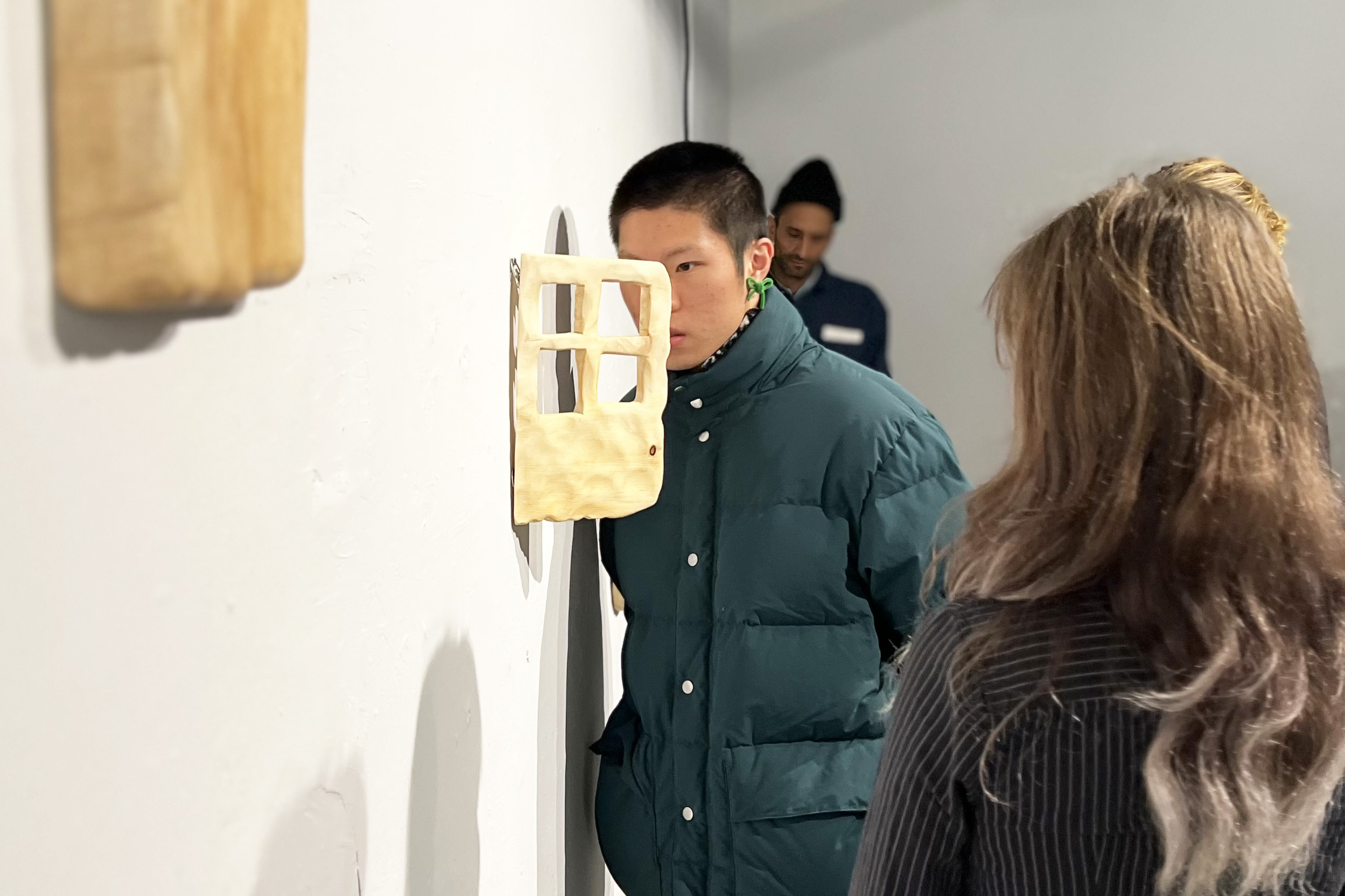
Domestic Interior by Bec Patsenker 25 SC offers a more upbeat view of life and the joy of welcoming a new lover into one’s space. Made up of four wall-mounted wooden elements, the piece is meant to be seen but not touched. Viewers describe it as “peaceful” and “elegant.” “I love the indents in the pillows, like the people are still lying in the bed,” one student says.
Next up is a politically charged piece by Sal Xu 25 SC, who invites the class to interact with it freely. Viewers can enter a fenced area to place wooden stars into holes specifically cut to fit them or avoid the “corral” and approach it from the sides.
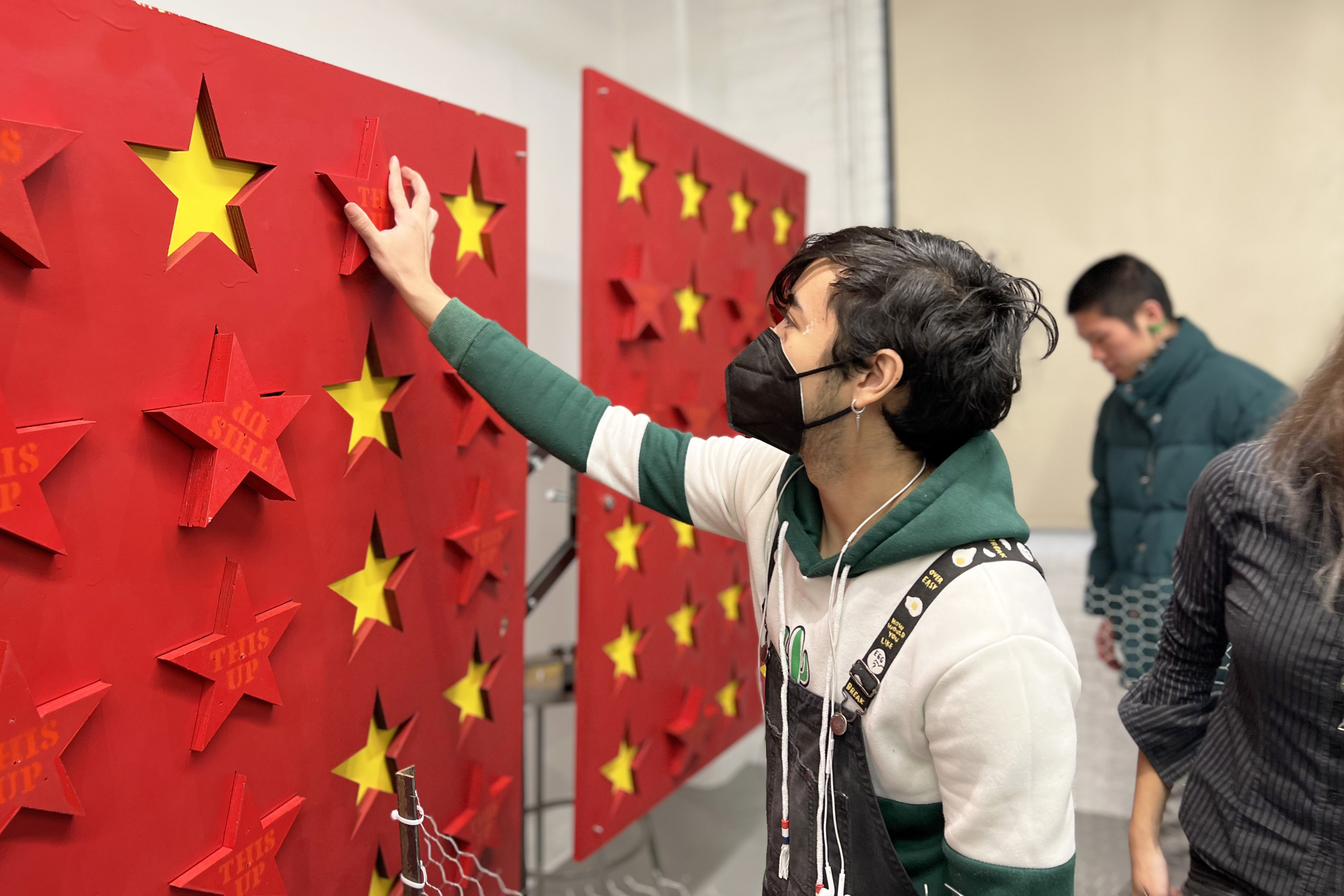
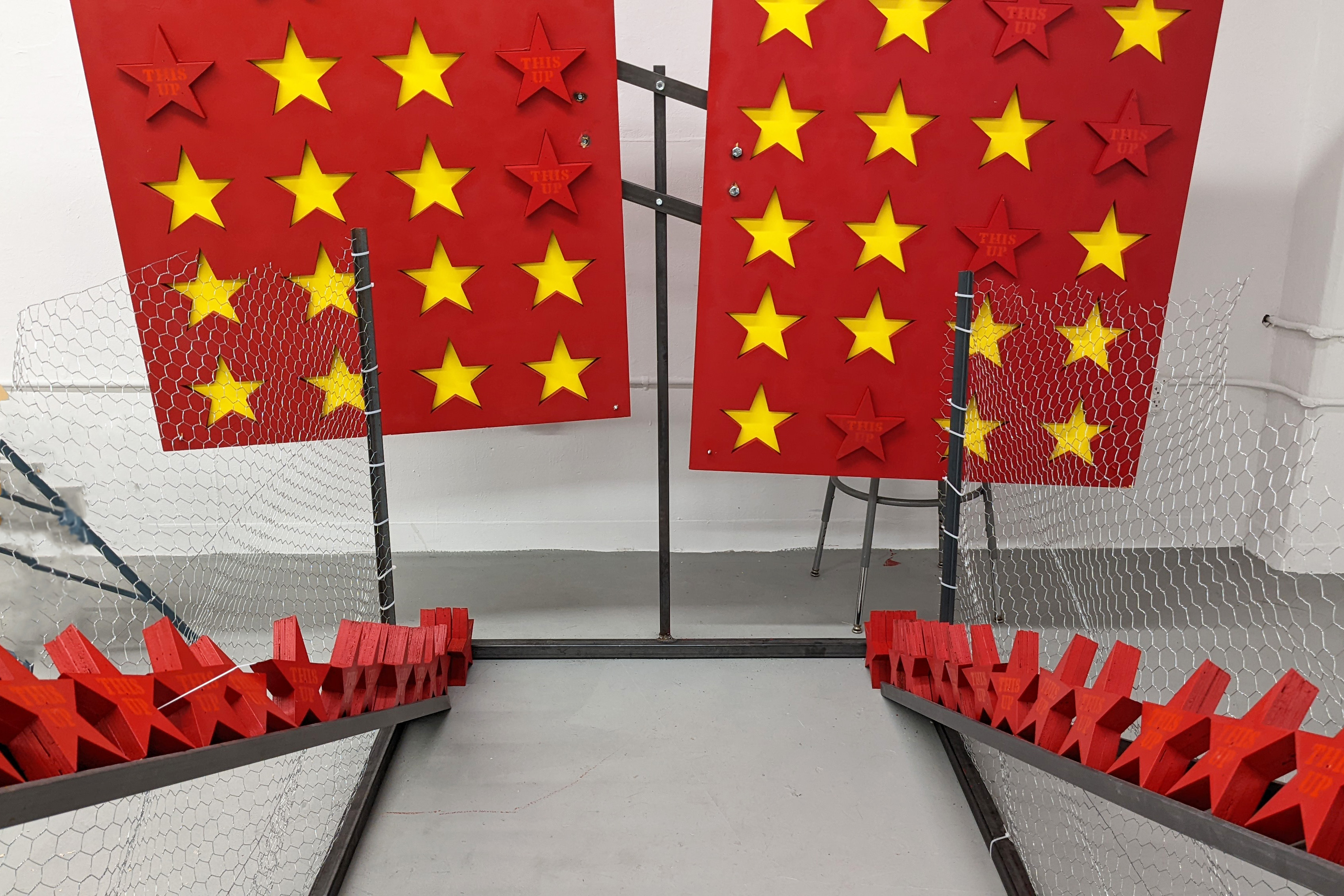
“It makes me think about control, choice and conformity,” one student notes. Another feels that the piece relates to propaganda and the state. “The original idea was inspired by my political stance and my Chinese nationality,” Xu explains. She references the stars in the Chinese flag, noting that the large one represents the Communist party and the smaller stars the Chinese people. “I’m trying to rearrange that power in this piece,” the artist adds, “and find the right balance for myself.”
—Simone Solondz / photos by Isabel Roberts
December 2, 2022
